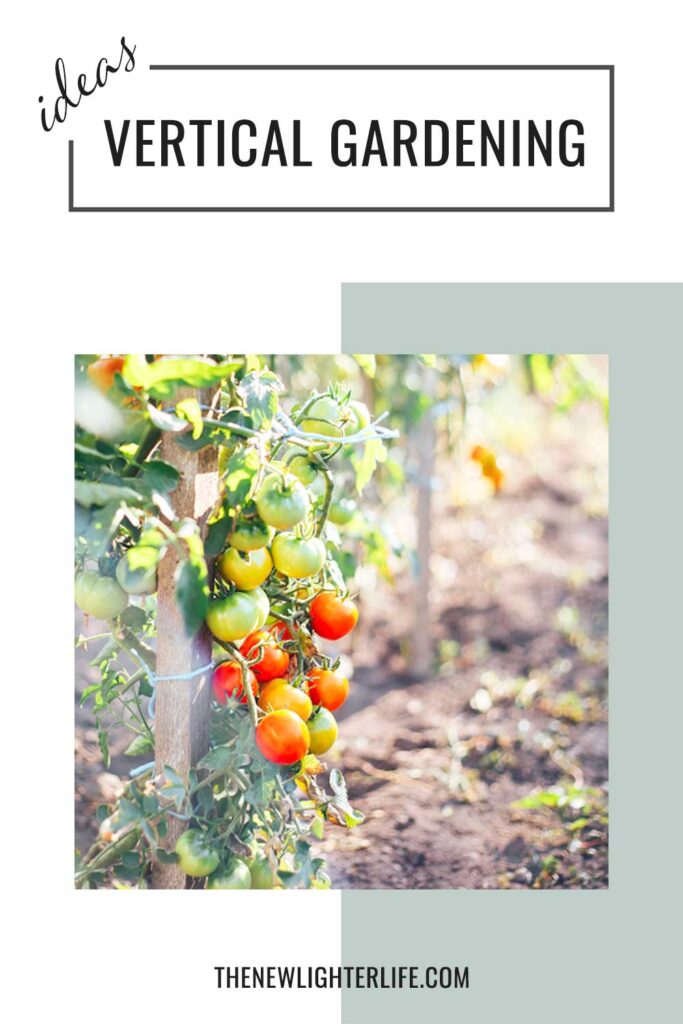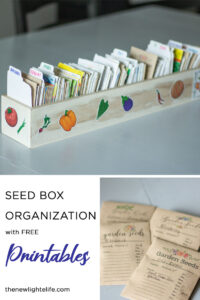Growing vegetables is so incredibly rewarding, but it can also be challenging if you’re dealing with limited space. By incorporating the right vertical vegetable gardening ideas, you can maximize your growing space and enjoy delicious homegrown produce. This is especially useful if have a small backyard, a balcony, or even just a sunny window.
I personally have more than enough garden space to feed my family, but my favorite features in my garden are my trellises. So let’s get into growing vegetables vertically.
What is Vertical Vegetable Gardening?
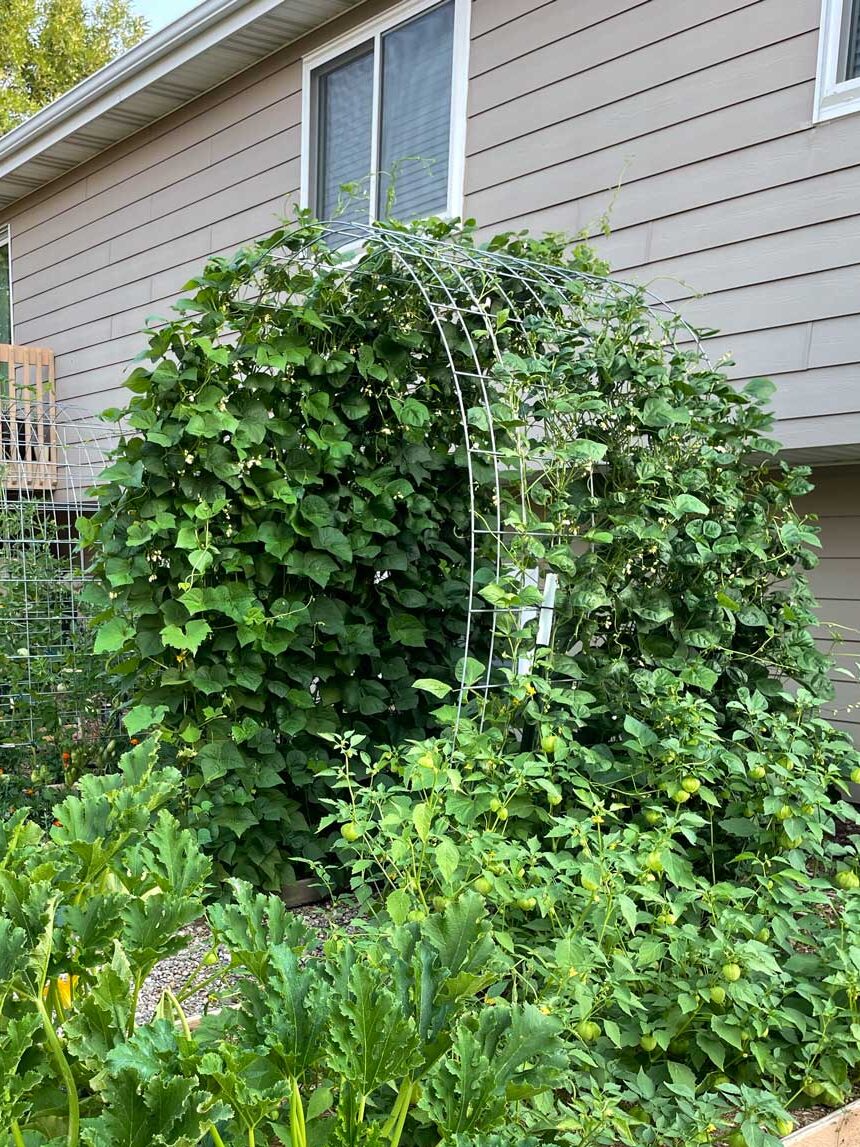
Vertical vegetable gardening is the best way to save space by growing your vegetables from the ground using different structures such as stakes, trellises, cages, or fences. Through vertical gardening, you can grow healthy plants in limited garden spaces.
It’s a game-changer! Vertical vegetable gardening turns the traditional gardening world upside down. Instead of spreading out, your garden grows up. It’s a fantastic way to maximize your space while creating a beautiful productive garden. I have long been a fan of square-foot gardening, which pairs so nicely with vertical growing.
The Benefits of Vertical Vegetable Gardening
Space-Saving
It’s no surprise that one of the main benefits of vertical vegetable gardening is maximizing garden space. You can transform a tiny balcony or even a sunny kitchen wall into a productive vertical vegetable garden. Instead of sprawling out, your plants grow upwards, freeing up valuable ground space for other plants that cannot be vertically grown.
Improved Air Circulation
Another advantage is better air circulation, which is beneficial for plant health. Good air circulation can help prevent the spread of diseases and pests, keeping your plants healthier. Additionally, by growing plants off the ground, you can significantly reduce the instances of soil-borne diseases or pests attacking ripening fruit on the ground.
Easy Harvesting
Vertical vegetable gardening makes harvesting a breeze. You won’t have to bend over or kneel down to pick your ripe vegetables. Plus, it’s easier to spot ripe produce when it’s at eye level, and the vegetables stay cleaner, too.
Shade Provision
Vertical vegetable gardens can also provide valuable shade for plants that prefer cooler conditions. Growing taller plants like tomatoes or beans creates a natural shade for lower-growing, shade-loving plants like spinach and lettuce.
Essential Considerations for Vertical Vegetable Gardening
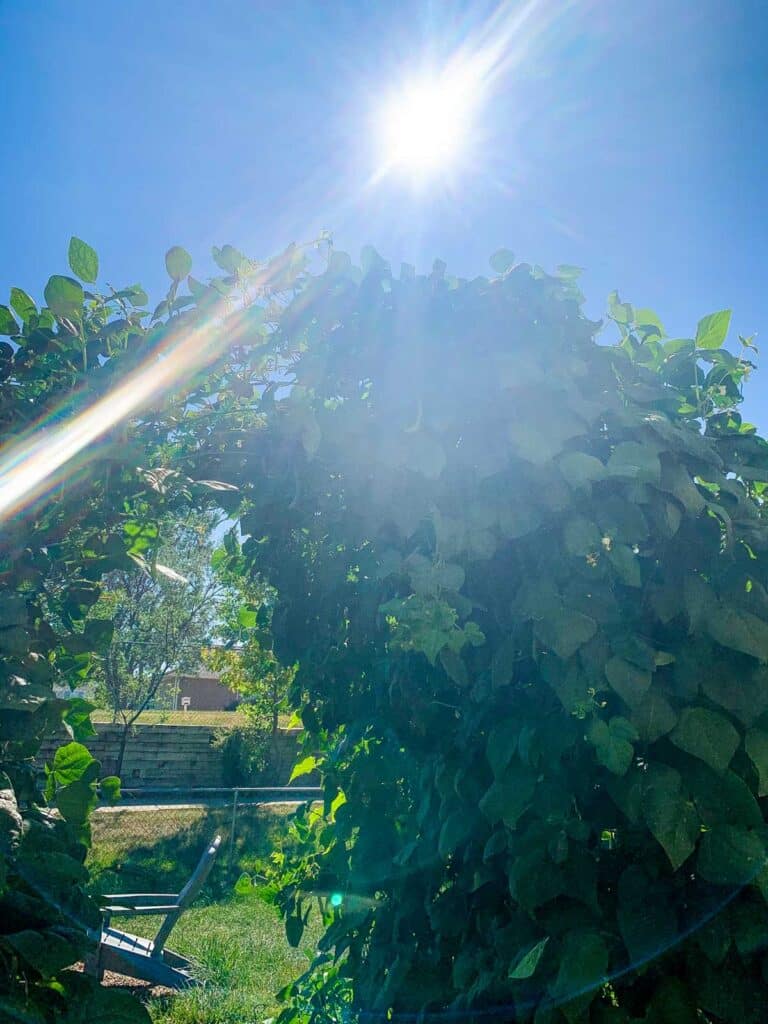
Before you start your vertical vegetable garden, there are a few things to consider:
Sunlight
Identify the amount of sunlight your chosen area receives. Most vegetables require at least six hours of sunlight per day. However, if your space doesn’t get that much sun, don’t worry! Many leafy vegetables like lettuce, cabbage, and spinach can thrive in shadier spots.
Support Structures
Your choice of support structure will depend on the type of vegetables you want to grow. Trellises, constructed A-frames, stakes, cattle panel fencing, netting, and cages are suitable for climbing plants like beans and tomatoes, while shelves and hanging baskets can hold a variety of container-friendly vegetables.
Your Budget
Vertical growing does not need to break the bank and you can get creative with your structures. Some ideas for budget-friendly structures include:
- Repurposed ladders
- Old bed frame or baby crib frame
- Masonry mesh (to trellis smaller fruiting plants)
- Cattle panels (to trellis larger fruiting plants)
- Netting strung between t-posts
Vertical Gardening Ideas: Vegetables That Love to Climb
There are many vegetables that are perfectly suited to vertical gardening. Here are some favorites:
1. Peas
Peas are a great choice for a vertical vegetable garden. They naturally climb and can reach impressive heights if given the support they need. Plus, they’re a cool-weather crop, making them perfect for early spring planting.
2. Tomatoes
Tomatoes, especially indeterminate varieties that continue to grow and produce fruit throughout the season, are ideal for vertical gardening. Growing tomatoes vertically can also help reduce diseases and make harvesting easier.
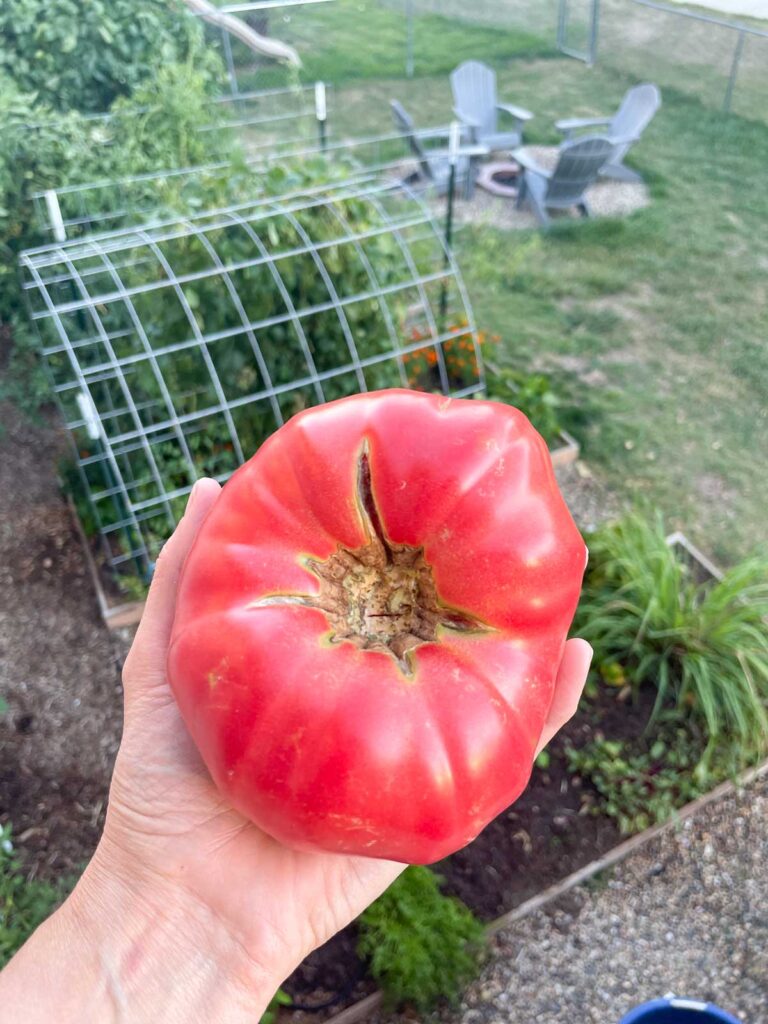
3. Cucumbers
Cucumbers are another excellent choice for vertical vegetable gardens. They love to climb and will produce straight, evenly-shaped cucumbers when grown vertically.

4. Melons
While you might not think of melons for a vertical garden, smaller varieties can actually do quite well. Just ensure you provide strong support to bear their weight.
5. Squash and Zucchini
Like melons, squash and zucchini can also be grown vertically as long as you provide adequate support. They also benefit from improved air circulation, which can help prevent mildew and other diseases.

6. Pole Beans
Growing pole beans are perfect for vertical growing. They also love climbing and will flourish and will continue to grow as long as they have something to grab onto (or frost hits).
7. Malabar Spinach
Not only is Malabar spinach beautiful, but it is also tasty. This is best grown in hot climates when temperatures are above 90°F.
Vertical Gardening Ideas: Types of Vertical Supports
The type of support you choose for your vertical vegetable garden will depend on your space, your budget, and the type of vegetables you’re growing. Here are a few vertical gardening ideas for support structures:
1. Trellises and Fences
Trellises and fences are classic choices for vertical vegetable gardens. They provide plenty of space for plants to climb and are relatively easy to install. You can read more about installing cattle panel trellises or arches here.
2. Poles and Posts
Poles and posts can be used for single plants or to support horizontal wires or netting for multiple plants. You can also string netting between posts to add more vertical growing space between posts. Singular posts are a good choice for plants that need support such as determinate tomatoes, zucchini, and tomatillos.
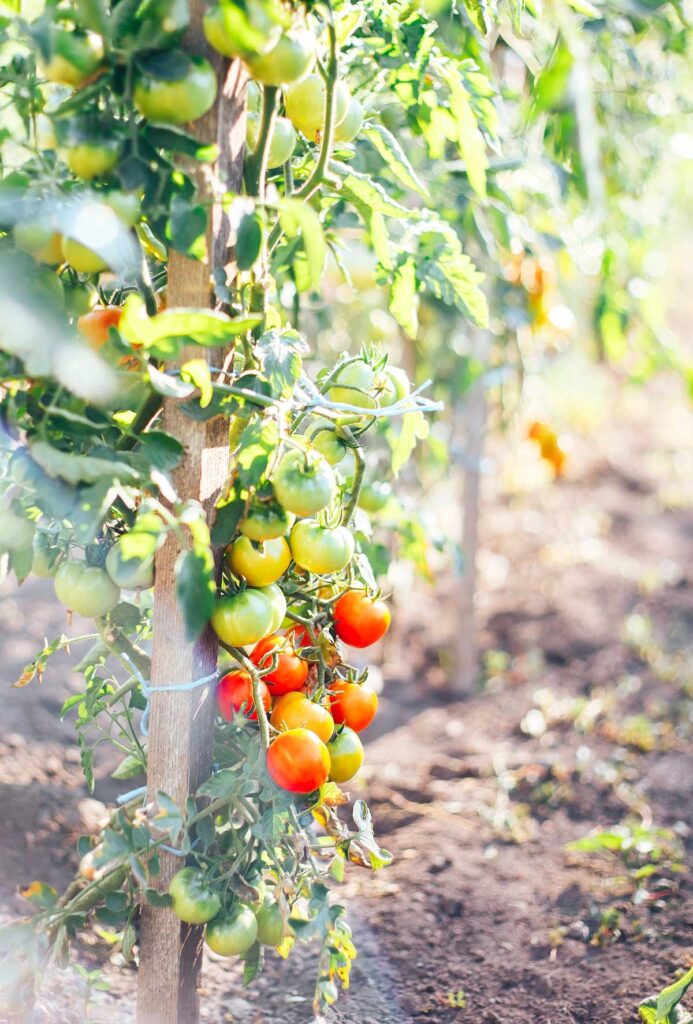
3. A-Frames
An A-frame is a versatile option that can easily be moved around the garden during the next growing season. You can grow plants on both sides of the frame, doubling your growing space.
4. Wire Cages
Wire cages, often used for tomatoes, are another excellent option for vertical vegetable gardening. They provide sturdy support and can be used for a variety of climbing plants. In my experience, the square ones are far sturdier and will last multiple seasons.
5. Shelves and Hanging Baskets
Shelves and hanging baskets are perfect if you’re working with a smaller space like a balcony or patio. You can grow a variety of vegetables in containers and arrange them on the shelves or hang them to maximize your space.
6. GreenStalks
These beautiful vertical planters are a popular choice amongst gardeners. A couple of years ago, I convinced my mom to buy one and she loves her set! (disclaimer: I have no affiliation with the company but they are an excellent choice if you haven’t heard of them before)
Vertical Gardening Ideas: Let Your Imagination Run Wild
As you can see, the sky’s the limit when it comes to vertical gardening ideas. You could create a beautiful and productive vertical vegetable through so many different structures…possibilities are nearly limitless. With a bit of creativity, you can turn any space into a lush, green, food-producing vertical garden.
Remember, vertical growing isn’t just about growing food. It’s also about creating a beautiful, green space where you can relax and enjoy nature, even in the heart of the city.
Happy Growing UP!

